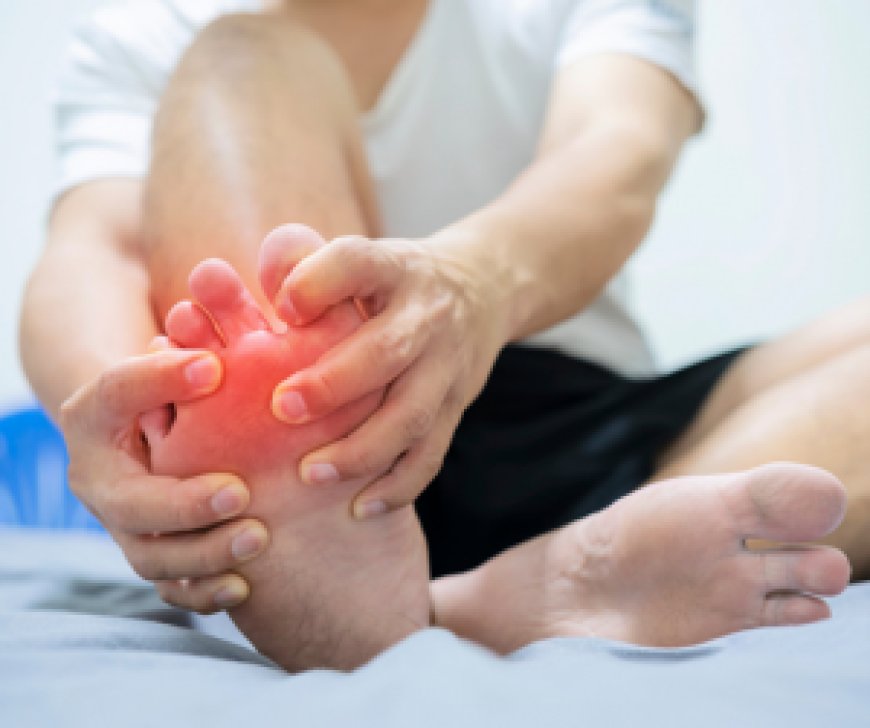Acute Pain: Effective Treatment and Management Strategies.
Acute pain, a discomforting sensation that usually results from an injury or illness, can significantly affect one's quality of life.

Acute pain, a discomforting sensation that usually results from an injury or illness, can significantly affect one's quality of life. Acute pain, whether caused by a small accident, surgery, or a medical condition, needs immediate care and correct management to relieve discomfort and promote recovery. This detailed book delves into the complexities of acute pain, examining effective treatment choices and practical ways for managing this common yet devastating disease.
What is Acute Pain?
Acute pain is distinguished by its fast onset and brief duration, which may endure for days to weeks. Acute pain, as opposed to chronic pain, which lasts for a lengthy period of time, acts as a warning signal to the body about impending injury or tissue damage. This sort of discomfort often goes away if the underlying reason is treated or the healing process is completed.
Etadol 100mg is an effective medication recognized for its ability to relieve pain and inflammation. This medication's primary component, Etadol, provides comfort to those suffering from a variety of pain, including arthritis, migraines, and post-operative pain. Understanding how Etadol 100mg works and its advantages is critical for people looking for effective pain relief options.
Causes of Acute Pain
Acute pain may result from a variety of causes, including:
Injury: Traumatic occurrences such as falls, fractures, sprains, and burns may cause acute pain.
Surgical Procedures: Postoperative discomfort is frequent after surgical treatments and may need particular care measures.
Acute pain episodes may be caused by a variety of medical disorders, including kidney stones, infections, and migraines.
Inflammatory Responses: Acute pain may be caused by inflammation due to tissue damage or infection.
Understanding the underlying cause of acute pain is critical for selecting the best effective treatment strategy.
Asmanol 100 mg is a medicine used to relieve pain. It includes a particular active component that is intended to relieve many forms of pain, including acute and chronic pain. The actual content of Asmanol may vary based on the manufacturer and region of distribution. Typically, such drugs are used to treat muscular pain, joint pain, and postoperative pain.
Treatment Options For Acute Pain
Effective acute pain treatment often requires a multimodal strategy that is customized to the individual's requirements as well as the underlying cause. Some frequent therapy options are:
1. Medication:
Analgesics Acute pain may be relieved with over-the-counter or prescription pain medications such acetaminophen, nonsteroidal anti-inflammatory medicines (NSAIDs), and opioids. However, opioids are normally reserved for severe pain and must be closely monitored because to the risk of addiction and adverse effects.
Topical treatments such as creams, gels, or patches containing numbing agents or anti-inflammatory medications may provide localized pain relief for injuries or musculoskeletal disorders.
2. Physical Therapy:
Physical therapists may prescribe tailored exercises and stretches to increase flexibility, strength, and range of motion, lowering pain and encouraging recovery.
Manual therapy, which includes treatments like massage, manipulation, and mobilization, may help relieve muscular tension, improve circulation, and decrease discomfort.
3. Interventional procedures.
Corticosteroid injections, nerve blocks, or trigger point injections may be prescribed to target particular regions of discomfort and offer brief relief.
Invasive techniques, such as nerve ablation or joint injections, may be used to treat severe or chronic acute pain that does not respond to conservative therapy.
4. Psychological interventions.
Cognitive Behavioral Therapy (CBT): CBT procedures may help people build coping mechanisms, challenge negative thinking patterns, and regulate stress, lowering their experience of discomfort.
Relaxation Techniques: Mindfulness meditation, deep breathing techniques, and guided visualization may help you relax, relieve muscular tension, and distract from discomfort.
Tapentadol, an opioid analgesic used to treat moderate to severe pain, is marketed under the brand name Noosanta 100 mg. Tapentadol acts as a μ-opioid receptor agonist and norepinephrine reuptake inhibitor, altering the brain's reaction to pain and delivering excellent pain relief.
Lifestyle Changes for Managing Acute Pain
In addition to medicinal measures, several lifestyle changes may supplement therapy efforts and enhance pain management outcomes:
1. Healthy Diet:
Eating a well-balanced diet rich in fruits, vegetables, whole grains, and lean meats will improve general health and lower inflammation, thereby alleviating pain.
2. Regular exercise:
Low-impact exercises like walking, swimming, or yoga may improve circulation, release endorphins (natural painkillers), and boost mood, all of which help with pain management.
3. Stress Management:
Using relaxation methods, prioritizing self-care, and getting assistance from friends, family, or mental health experts may all help reduce stress and its influence on pain perception.
4. Quality sleep:
Keeping a regular sleep schedule, maintaining a pleasant sleep environment, and adopting excellent sleep hygiene routines will help you get restorative sleep, which is essential for pain management and general well-being.
Conclusion
Acute pain, although temporary, may greatly impair daily activities and lower quality of life if not managed. Individuals may successfully reduce acute pain and promote recovery by identifying the underlying causes and implementing a complete treatment and management strategy. There are several ways to deal with acute pain and improve general well-being, including drugs, physical therapy, lifestyle changes, and psychological therapies.
More Info:- Click here












